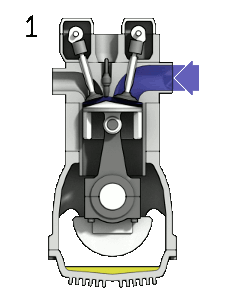Spark plug: Difference between revisions
J.williams (talk | contribs) No edit summary |
J.williams (talk | contribs) m (1 revision imported) |
(No difference)
| |
Revision as of 21:31, 26 August 2015
A spark plug is used as a source of ignition, as the "spark" in its name might imply. It is a key component of internal combustion engines and its primary function is to ignite a fuel/air mixture within the combustion chamber of a car, or other system. Figure one shows plugs, the spark travels across the gap on the left side of the spark plug.
The voltage in the ignition system must be high enough to create a spark across the spark plug gap (see figure 2), much like a bolt of lightning traveling from the clouds to the Earth. These voltages can be anywhere from 40 kV to 100 kV, in other words high voltage.[2]
Spark plugs are an important part of gasoline engines, but not a part of diesel engines, since diesel is ignited by the compression of the gas instead.
To learn more about spark plugs, click here.

References
- ↑ Wikimedia Commons [Online], Available: http://upload.wikimedia.org/wikipedia/commons/1/10/Spark_plugs.jpg
- ↑ HowStuffWorks, Spark Plug [Online], Available: http://auto.howstuffworks.com/ignition-system2.htm
- ↑ http://en.wikipedia.org/wiki/Internal_combustion_engine#mediaviewer/File:4StrokeEngine_Ortho_3D_Small.gif


